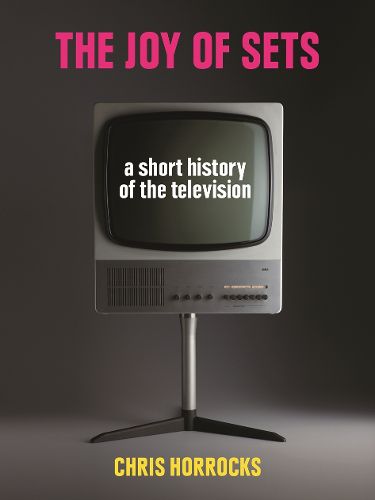Readings Newsletter
Become a Readings Member to make your shopping experience even easier.
Sign in or sign up for free!
You’re not far away from qualifying for FREE standard shipping within Australia
You’ve qualified for FREE standard shipping within Australia
The cart is loading…






We watch television for hours at a time, but the television set is never itself the object of our attention. We forget the tv is in our room as we engage with images from afar. How do we account for such an everyday piece of furniture? This book focuses on the tv set’s contradictory presence both as a material object and as a receiver of images.
Chris Horrocks traces the prehistory of television as a fantastic vision in nineteenth-century culture, and charts its emergence through the fears and desires that society projected onto this alien presence in the living room. He follows television’s journey from its strange roots in spiritualism, imperialism, and Victorian experiments with electro-magnetism, through its contested ‘invention’ by heroic figures such as Baird and Farnsworth, to its arrival as essential consumer product. Along the way the tv acquired a significance and role that advertising, literature, and cinema amplified.
The tv appears in culture as a sinister object capable of controlling thought, monitoring its audience, and causing mental and physical harm. The design of the television console and cabinet imbued it with signs of status and good taste, and more radical designs drew on the space race and avant-garde design. The set has even become a radical medium in the work of artists Wolf Vostell and Nam June Paik. Yet the television as a classic object began to disappear once the cathode ray tube became obsolete and flat-screen versions merged with the wall. The Joy of Sets brings this most elusive object into critical and historical focus for the first time.
$9.00 standard shipping within Australia
FREE standard shipping within Australia for orders over $100.00
Express & International shipping calculated at checkout
We watch television for hours at a time, but the television set is never itself the object of our attention. We forget the tv is in our room as we engage with images from afar. How do we account for such an everyday piece of furniture? This book focuses on the tv set’s contradictory presence both as a material object and as a receiver of images.
Chris Horrocks traces the prehistory of television as a fantastic vision in nineteenth-century culture, and charts its emergence through the fears and desires that society projected onto this alien presence in the living room. He follows television’s journey from its strange roots in spiritualism, imperialism, and Victorian experiments with electro-magnetism, through its contested ‘invention’ by heroic figures such as Baird and Farnsworth, to its arrival as essential consumer product. Along the way the tv acquired a significance and role that advertising, literature, and cinema amplified.
The tv appears in culture as a sinister object capable of controlling thought, monitoring its audience, and causing mental and physical harm. The design of the television console and cabinet imbued it with signs of status and good taste, and more radical designs drew on the space race and avant-garde design. The set has even become a radical medium in the work of artists Wolf Vostell and Nam June Paik. Yet the television as a classic object began to disappear once the cathode ray tube became obsolete and flat-screen versions merged with the wall. The Joy of Sets brings this most elusive object into critical and historical focus for the first time.